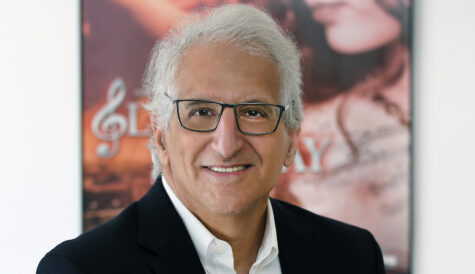David Michel: Content extremes and the new radical indies
 It is now quite clear that our industry is witness to major changes, which are affecting scripted coproductions in both drama and children’s programming.
It is now quite clear that our industry is witness to major changes, which are affecting scripted coproductions in both drama and children’s programming.
On the production side, a new tide of concentration of the key media players is sweeping Europe and Asia where massive media groups are about to be formed, Endemol-Shine-Core being the most recent example.
Meanwhile, on the US broadcast side, another tide sees the now ubiquitous non-linear competitors and specialty cable channels, from AMC to Disney, intensifying competition, especially in the premium content segment.
The now obvious product of this increased competition is ‘extreme niche branding’: each platform or channel is branding itself in a way that is more and more specific (The Knick, as a branding tool to redefine Cinemax’s drama offering is a good recent example). This movement, which started primarily as a US phenomenon, is now rapidly spreading around the world.
In this new age of “content extremes” there will be two groups of producers working at either extreme: US studios and/or networks and a limited number of ‘mega-international’ groups and radical indies
In the ‘old world’ model of content, international programming was divided neatly into two categories:
1) Fully-funded original US productions in which one player (the network/studio) was funding and giving creative notes on scripted shows. This gave birth to the US showrunner, an individual entrusted by one single client to imprint a unique voice on a programme. From Doc McStuffins to Game of Thrones, this model has enabled bold new talent to emerge and has encouraged new ways to tell stories. This now-classic US system has been embraced by the likes of Netflix and Amazon to come up with groundbreaking content; thus reinforcing the trend for über platform-branding.
2) The international coproduction model patching financing from various networks and countries and hence combining creative notes from very different perspectives. This model allowed for the rise of many mid-sized international media groups outside the United States. While we all know of the ugly side of this system (the disastrous Euro-pudding), many successful examples can be found both in drama such as The Border, and kids TV, from Rabid Invasion to Totally Spies. The key to this model’s success relies on the ability of the producer, not the showrunner, to establish a clear creative direction for a series by smartly aggregating the sometimes-contradictory notes coming from the series’ financiers.
Our belief is that this distinction cannot and will not sustain.
On the creative side, audiences are now used to high-end, studio-budget type series because of the upsurge of the competition to create premium content, which was intensified by Netflix.
On the branding side, the rise of the premium series is also a reflection of linear and non-linear platforms looking for content, which can uniquely build their brand. In a matter of months Orange is the New Black and House of Cards created a very distinctive brand image for Netflix, in the same way the first generation of HBO shows did. In the kids business, series such as Adventure Time provide the same brand defining content for Cartoon Network.
Besides quality, this new breed of premium shows have in common a clear a mission to support the niche branding of the one platform they’re airing on. This is clearly becoming a world of one show equals one broadcaster equals one brand image; going against the old model of producing a series for a variety of partners, sharing notes and co-financing. This is already a fact of life in the US and will soon be a reality in Europe.
The content market is becoming polarised between high-end and low-cost, with little room left between local content and premium US or international series
The content market is like many others becoming polarised between high-end and low-cost, with little room left between local content and premium US or international series produced to fit a specific client’s branding.
This means that the scripted bread and butter of most media groups, coproduced content that is “brand-compatible” with a multitude of broadcasters in order to feed international sales, will become increasingly hard to put together.
In a nutshell, this new age of “content extremes” (premium international and low-cost local), will mostly be fulfilled by two groups of producers working at either extreme: US studios and/or networks and a limited number of ‘mega-international’ groups such as eOne or Endemol-Shine and radical indies.
The latter is a new generation of well-funded, agile content companies, able to work with high-end talent without being tied by the mid-sized independent media group model with its in-house distribution and high structural costs and make creator-driven series hard to foster.
The kids business – it being ahead of the global trends by a few years – is already showing us this change in action. Companies such as Little Airplane (Wonderpets) or Frederator Studios on the animation side are both global, radical indies providing creative-driven content in an über-branded world.
Successful radical companies have three abilities in common: to work with premium talent, to sell to the US market, and to put together bespoke financial models for each show. Achieving all three is a difficult act to perform within a medium-sized group with its demands for built-in distribution.
There are many reasons to be excited by this new world of content extremes, especially on a creative level. As an industry, this means deep and sometimes difficult times for those who will keep playing by the old rules… and the surge of a new breed of global, radical indies.
David Michel is the former boss of France-based producer Marathon Media. Earlier this year he set up a new indie producer, distributor and rights company Cottonwood Media.



